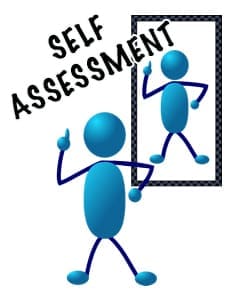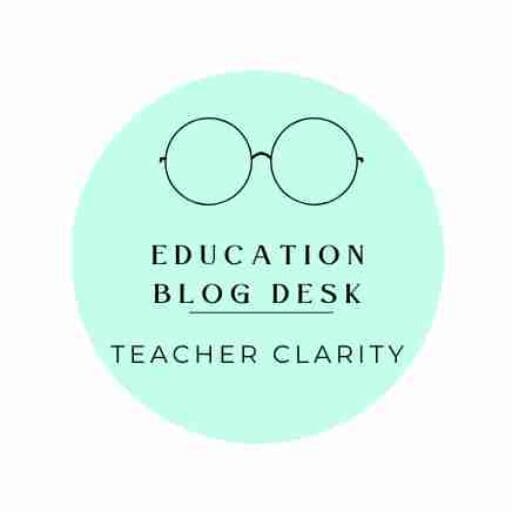
Introduction
Creating a place where all students feel included and can take part in their learning is important for their growth in school. When teachers use self-assessment, they help students take charge of their own learning. This builds a sense of responsibility and helps them learn to guide themselves. This guide will look at helpful ways to use self-assessment in your classroom.
Key Highlights
- Empower students to take ownership of their learning by implementing self-assessment techniques.
- Discover the benefits of self-assessment, such as increased student motivation, engagement, and metacognitive skills.
- Explore practical examples of self-assessment tools, including learning logs, rubric self-assessments, and exit tickets.
- Learn how to effectively introduce self-assessment to students and provide ongoing support throughout the process.
- Encourage a growth mindset, where students view challenges as valuable learning experiences.
Understanding the Basics of Self-Assessment
Self-assessment is a helpful way for students to think about their own work. They look at what they have done and see how good it is. They also find ways to improve. This isn’t just about giving their own grades. Instead, students compare their work to set rules, check how they did, and plan how to get better with their understanding and skills.
When students take part in self-assessment, they build important skills that help them think about their learning. They become more aware of how they learn, what they are good at, and what they need to work on. This understanding helps them take control of their learning journey. They can then make smart choices about how they move forward in school.
Defining Self-Assessment in Educational Contexts
According to Benefits and Examples of Student Self-Assessments article self-assessment in education means that students look at their own work or performance. They do this by using specific rules or standards to help them. This practice encourages students to be more involved in their own learning. They reflect on what they understand and see where they can improve. Self-assessment isn’t just about grading. It includes different methods, like writing journal entries, using self-evaluation charts, and getting feedback from peers.
Doing self-assessment helps students learn more deeply and understand better. When they think about their own work, they learn the subject and the assessment criteria more clearly. As a result, their performance may get better, and they feel a greater sense of achievement.
Using self-assessment in higher education can be very helpful. It allows students to take more control of their learning. This also prepares them for independent study and future work in their careers.
The Significance of Self-Assessment for Learners
Benefits and Examples of Student Self-Assessments article suggests self-assessment helps learners take charge of their education. It gives them a clear way to think about how they are doing. When students look at their own work, they better understand what they do well and what they can work on. This helps them set realistic goals and see their progress.
Also, self-assessment builds a growth mindset. It shifts the focus from grades to the learning process itself. Students who use self-assessment see challenges as chances to grow. They are more likely to keep trying even when things get tough. They know that learning is a journey and that setbacks are just a part of it.
Using self-assessment in the classroom can help students feel more independent and responsible. This can lead to more motivation, better engagement, and a deeper understanding of what they are studying.
Preparing for Self-Assessment: What You Need to Get Started
Before you start self-assessment with your students, you need to make a safe space that supports reflection and growth. First, clearly explain why self-assessment is important and the good things that come from it. Stress that it is meant for learning, not for judging anyone.
Also, give students clear and specific assessment criteria. You can work together to create rubrics or checklists. This will help students know what good work looks like and let them use these tools to fairly assess their own performance.
Identifying Goals and Objectives
Clearly defining learning goals and success criteria is very important before starting self-assessment. First, set specific, measurable, achievable, relevant, and time-bound (SMART) learning goals for the lesson or unit. This helps students know what they are working towards and creates a guide for their self-evaluation.
Next, introduce success criteria. Break the learning goal into smaller and manageable steps. Success criteria show the specific qualities or elements needed to show that a student has reached the learning goal. Involve students in defining success criteria. This helps them feel responsible and understand the expectations better.
By setting clear learning goals and success criteria, you give students the right tools. These tools help them with their learning process and allow them to do useful self-assessments.
Gathering Necessary Tools and Resources
To help students assess themselves, give them useful tools and resources. Having many options allows students to choose what fits their way of learning best. This means every student can get the support they need to do well.
Think about adding:
- Checklists: These simple lists help students clearly track their progress and check off all important parts of their assignment or task.
- Rubrics: Rubrics show various levels of skill, helping students judge their work fairly and find areas they can improve.
- Learning Logs: Learning logs let students think about their learning experiences, write down their progress, and set personal goals.
Step-by-Step Guide to Implementing Self-Assessment
According to Peer and self-assessment article for students Implementing self-assessment in the classroom can be easy. You can start with a clear plan. Slowly add these practices to your teaching. This will help students feel relaxed about checking their own work.
Begin by explaining self-assessment and showing how to do it. Then, give students more responsibility. Make sure to provide clear rules and helpful tools, like checklists or rubrics. These will help them reflect on their work.
Step 1: Introducing Self-Assessment to Learners
When you talk about self-assessment, it’s important to explain why it’s useful and what it can do. Remind everyone that self-assessment is not about giving themselves a grade. It is a helpful way to think about a piece of work and find out how to make it better.
In primary school, start with easy self-assessment activities. For instance, after finishing a writing task, students can read their work again. They can use a checklist to make sure they have used capital letters, punctuation marks, and spaces between words. This will help them get into the habit of looking over their own work to see what can be improved.
As students learn more about self-assessment, you can slowly add more detailed tools and methods. Encourage them to think critically about their learning. Show them examples of how self-assessment can help them be more independent and achieve better results.
Step 2: Creating Effective Self-Assessment Tools
Creating good self-assessment tools is important. They help students evaluate their own work. You should start by involving students in making these tools, if you can. This will give them ownership and help them understand the assessment criteria better.
For younger students, simple checklists work well. Use clear and short phrases that focus on one or two main points. For example, in a writing assignment checklist, you could use items like “I used capital letters at the beginning of each sentence” or “I checked my work for spelling errors.”
Rubrics are another option. They offer a detailed way to evaluate work. Rubrics give specific criteria for different levels of achievement. This helps students look at their own work more fairly. When making rubrics, ask students to help find the key criteria. Make sure the language is clear and easy to grasp.
Step 3: Facilitating the Self-Assessment Process
Effectively facilitating the self-assessment process involves providing clear guidelines, offering constructive feedback, and creating a supportive environment that encourages reflection and growth. Encourage students to view self-assessment as an integral part of their learning process, rather than just another task to complete.
To guide students, provide prompts and questions that encourage thoughtful reflection. For example, ask them to identify the most successful aspect of their work, areas where they faced challenges, or steps they would take to improve their performance. Model the process of providing constructive feedback, focusing on specific examples and suggestions for improvement.
Consider using a table like this to structure self-assessment feedback:
| Strength | Area for Improvement | Actionable Step |
|---|---|---|
| I organized my ideas logically. | I need to work on my sentence fluency. | I will practice writing different types of sentences. |
| I used vivid language in my writing. | I need to cite my sources correctly. | I will review |
Step 4: Analyzing Self-Assessment Results
To analyze self-assessment results, change how you look at the data. Instead of just gathering it, use it to improve student learning. Tell your students to see the results as helpful advice for bettering themselves, not as a score of their hard work.
Start by looking at the data. Find common strengths and areas where students can grow, whether in the whole class or for individual students. This review can help shape your future lessons. For instance, if many students struggle with certain assessment criteria, you can create lessons focused on those challenges.
Also, urge students to use their results to set personal learning goals. By thinking about their strengths and weaknesses, they can choose specific areas to work on and come up with ways to make progress.
Step 5: Providing Feedback and Support
While students look at their own work, it is very important to guide and support them during this time. Use strategies like peer assessment. This means students give helpful feedback about the work of their peers. It helps create a teamwork environment for learning.
Encourage students to share their thoughts on specific parts of their peers’ work. They should offer tips for improvement instead of just making general comments. Show them how to give constructive feedback. Remind them to use kind words and to provide clear examples and steps for making things better.
By giving regular feedback and building a helpful learning space, you help students see self-assessment as a good tool for their growth. This boosts their confidence and helps them take charge of their studies.
Conclusion
Implementing self-assessment can greatly improve the learning process. It allows students to take control of their own progress. By setting clear goals, giving good tools, and sharing constructive feedback, teachers can create a culture of self-awareness and improvement. Encouraging students to think about their strengths and areas to grow helps them improve their academic performance and develop important life skills. Use self-assessment as a helpful educational tool and see its positive effects on long-term learning outcomes. Remember, helping students with self-assessment is important to make them self-directed learners who succeed in school and in life.
